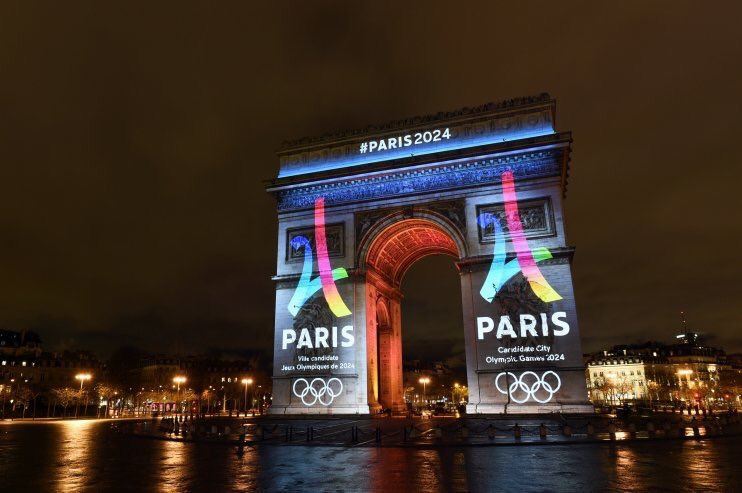On Thursday, June 14th, the Paris 2024 Organizing Committee announced that it had dropped its plans to build a permanent 15,000-seat aquatic center near the Stade de France and that it would instead direct its funds towards building a temporary arena of the same capacity containing three pools.
Though Paris 2024 and its leader, Tony Estanguet, originally fought for the creation of a permanent facility, Estanguet emphasized that he does not feel this change in direction is a great compromise. Though the arena will be temporary, two pools will remain at the site of the competition and become a part of the 2024 Olympic Legacy, with eight pools overall ultimately opening throughout the region.
This change in direction follows the signing of a “joint protocol” between the Paris 2024 Organizing Committee, the Olympic and Paralympic Delivery Authority (SOLIDEO) and its leader, mayor of Paris Anne Hidalgo, French Prime Minister Edouard Phillippe (not to be confused with President Emmanuel Macron), Sports Minister Laura Flessel, the Prime Minister’s Secretary of State with responsibility for disabled people Sophie Cluzel, and other Games stakeholders.
Though this concept seemingly mirrors the City of Omaha’s proven and effective method of hosting the U.S. Olympic Trials, it is different in that the competition pools for swimming will not be built as tear-downs and will remain in their places after the Games leave Paris in September of 2024. While the Qwest Center in Omaha provides a temporary pool within an arena of permanent seating, Paris 2024 will build several permanent pools with temporary seating allowing for up to 15,000 spectators to watch the competition.
The protocol redefines the concept of the pools and aquatic center in the following ways:
“The Olympic Aquatics Centre will remain a permanent facility, but with a redefined concept to help control costs, while also delivering a stronger legacy for local residents and, in particular, the children of Seine-Saint-Denis. The Games project will ultimately lead to the creation of eight legacy pools, in place of the five originally planned. They will help to meet a real need in a department with a significant shortage of community sports facilities, and where only half of children leave primary school able to swim. This significant and meaningful legacy can be comfortably accommodated within the Games budget. To enable it, Paris 2024 will increase its financial contribution to the project by more than 40 million Euros compared to its bid-phase provision.”
Furthermore, the protocol re-evaluates the Athletes’ Village:
“The Athletes’ Village will be maintained in its proposed location and according to existing plans. Legacy benefits of real value to the local area and its residents are expected to include: the undergrounding of power lines; new housing; the creation of new green spaces; and the building of an anti-noise wall.”
By restructuring the original budget and planned infrastructure, Paris 2024 will also save the French Government approximately € 20 million, lowering the Government expenditure on the aquatic facilities from €100 million down to €80 million. Even so, the Paris 2024 Organizing Committee has upped the ante on its own aquatics budget from €50 million to €90 million.
Though the swimming venues will not be set in permanent arenas, Paris 2024 will build a permanent 5,000-spectator arena for water polo which will remain for public use after the Games have concluded. The water polo arena will house both a 50 meter and a 25 meter pool.
In cutting back on government expenditures, Paris 2024 proves that it is dedicated to holding to the IOC’s “new norm” which focuses on making the Olympic Games more affordable and legacy-oriented.

I really hope that the IOC demands/requirements for an “Olympic Legacy” of permanent structures evolves. It is simply untenable to require the construction of massive facilities that go completely underutilized post-Olympics. A better legacy would be more facilities that can be used after, by more people.
France’s bid made sense in that the major stadium, Stade de France, was built for World Cup 1998. It’s a unique design that allows for seats to be brought forward over the track for football and rugby, and pulled back to reveal the track for track events. It already has 80,000 seats, and is used constantly, for French football and rugby home matches, as well as team matches and concerts. SdF is used FAR… Read more »
So cal always needs more 50M pools. Its the ones in peoples backyards that are under utilized. Cant wait to see the Belmont Shores one finished.
I sure hope we see it built. 2022 seems like a long time.
What is a « Eurodollar »?
It’s either a Euro or a Dollar
Other countries can call their currencies “dollars”
€ 20 million Eurodollars technically, I think, the equivalent of € 20 million emitted by a financial institution outside of the USA in USD (roughly $24 m)
It is not either a Euro or a Dollar. A Eurodollar is a US dollar deposit held in Europe.
However, in this case, Reid meant Euro.
Typical French.